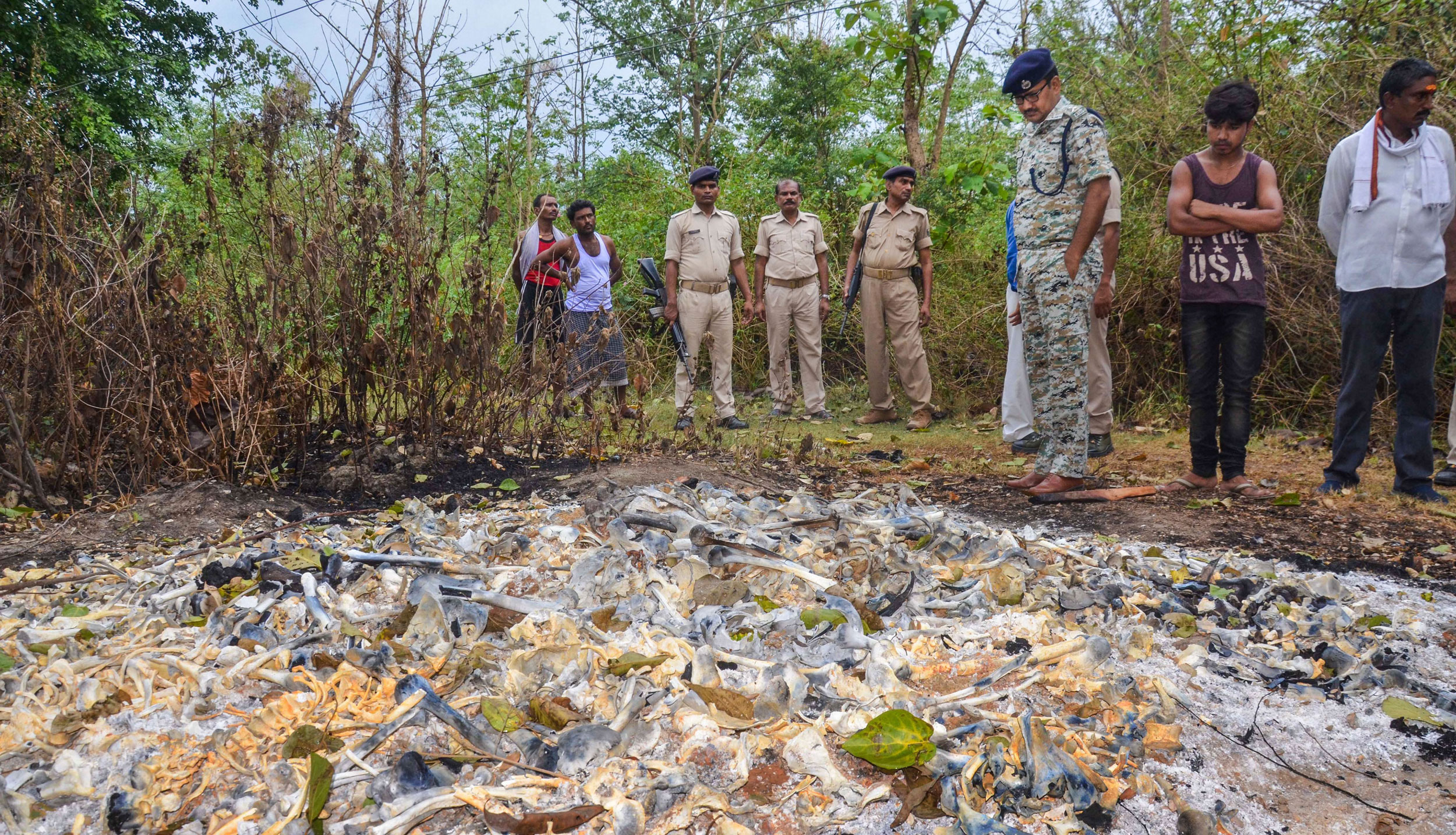Dozens of human skeletons and loose bones were found scattered across dense bushes behind the Sri Krishna Medical College and Hospital in Muzaffarpur on Saturday, triggering an outcry and prompting authorities to order a probe.
The hospital has been at the centre of the acute encephalitis syndrome (AES) outbreak in north Bihar, with around 90 of the 150-odd child deaths occurring there over the past three weeks amid concerns about its poor facilities and shortage of beds and doctors.
The bones and skeletons found so far have prima facie been identified as those of adult men and women. They are suspected to have come from unclaimed bodies brought by police for post-mortem, or from abandoned patients who died at the hospital.
Vikas Kumar, the principal of the Sri Krishna Medical College and Hospital, told The Telegraph that these bodies are handed over to the police for disposal.
The remains were found on a small patch of forestland that starts around 200 metres behind the hospital’s rear boundary wall. Some of the bones and skeletons had a charred look, suggesting a slipshod effort at cremation. Most were found scattered across the ground and the bushes.
Some had been packed into sacks that had their mouths clumsily sewn. A few skeletons were still draped in tattered and dirty clothes. Some seemed to be have been chewed on by animals — the woods are home to foxes, wild dogs and mongoose.
A group of people taking a short cut through the woods had noticed the remains. Local people said they mostly avoid the forest for fear of ghosts or wild animals. The health department, hospital and district administration have ordered probes.
Kumar, the principal, said the police brought two to three unclaimed bodies every week for post-mortem. Some abandoned patients too die alone at the hospital. “Once the post-mortem is done, we wait for 72 hours and write to the police to take the bodies away. They are handed over with proper documentation,” Kumar said.
“The state health society (an arm of the health department) pays Rs 2,000 by cheque to the police for cremation or burial of every such body. It’s the responsibility of the local Ahiyapur police station to cremate or bury the bodies.”
Kumar said the police were usually late in taking the bodies away. “The hospital doesn’t know what they do after receiving the bodies. We had handed over 18-19 bodies to the police on June 17,” he said.
This newspaper’s repeated calls and text messages to senior police officers in Muzaffarpur, including the inspector-general, deputy inspector-general and senior superintendent of police, either evoked no response or were met with the claim that the officer was busy video-conferencing with the state headquarters.
AES rain relief
Doctors, however, have heaved a sigh of relief with the monsoon rains arriving in large parts of Bihar, including Muzaffarpur, 90km north of Patna.
“The incidence of AES dips with the onset of rains. I have always asserted a direct correlation between the syndrome and the heat and humidity. The rains lower the temperature and the number of cases decrease. Today we lost only one child,” hospital superintendent Sunil Kumar Shahi said.
Chief minister Nitish Kumar had visited the hospital on June 18 under public pressure but faced protesters who shouted slogans asking him to go back.











